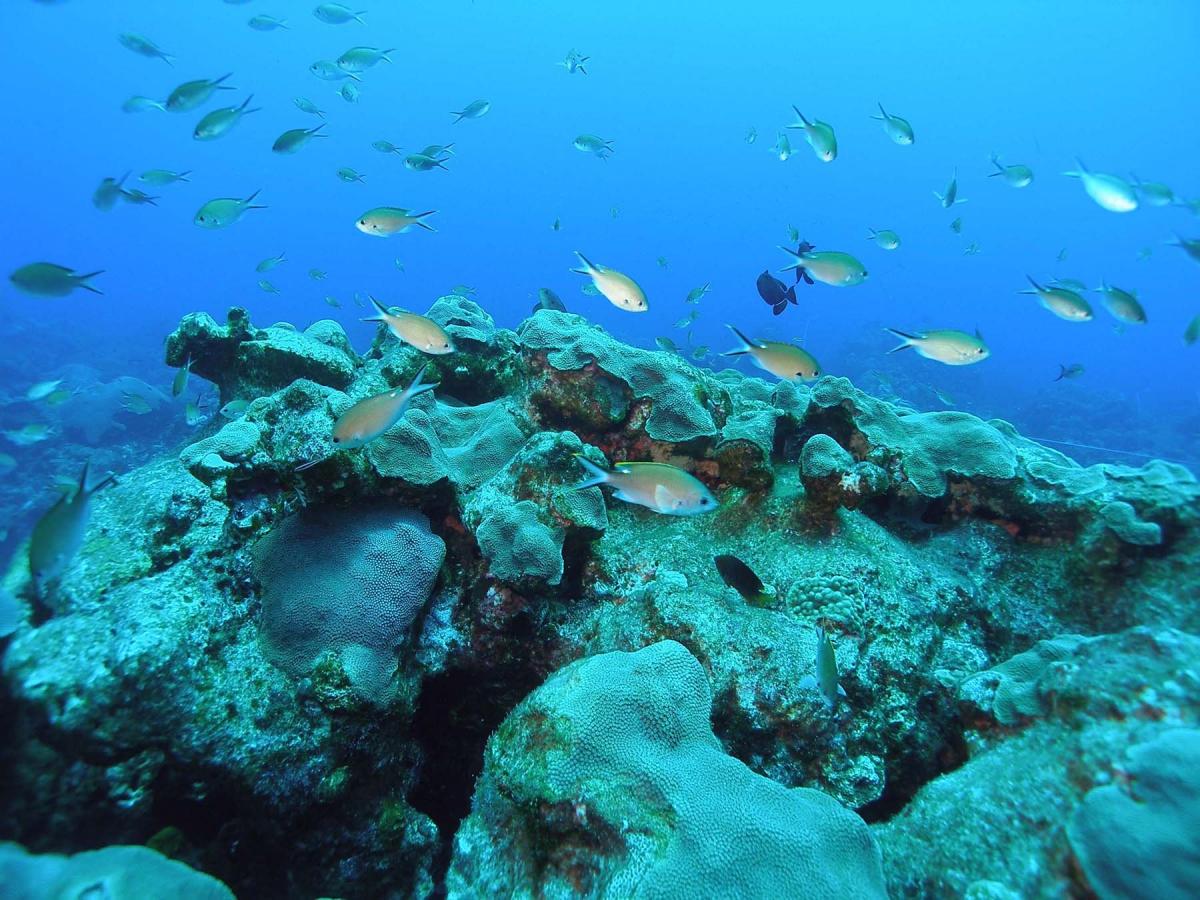
The ocean is losing its breath. Two years ago, an international team of scientists known as GO2NE (the Global Ocean Oxygen Network) published a report in Science with a stark picture of oxygen loss in Earth’s waters: In the open ocean, the amount of water with zero oxygen has spiked fourfold since the mid-20th century. In coastal water bodies, places with dangerously low oxygen (2 milligrams per liter or less) have increased more than 10-fold. It’s a problem not just for animals, but for people and economies—especially those that rely on tourism or subsistence fishing.
On Dec. 7, a new report emerged from the International Union for the Conservation of Nature. The ocean could lose 3-4% of its total oxygen by the end of the century if nothing changes, with losses even higher in the top, biodiversity-rich 1,000 meters. Large fish like tuna, sharks and marlin are among the most vulnerable. In the closing chapter, led by Denise Breitburg of the Smithsonian Environmental Research Center, they created a massive blueprint for resuscitating the ocean.
We’ve pulled out the highlights below, but the key lies in cracking two global conundrums—nutrient pollution and climate change. Nutrient pollution happens when chemicals like nitrogen and phosphorus stream into the water and fertilize massive growths of algae, which suck oxygen out of the water. Climate change’s role is more subtle, but just as powerful: Warmer water can’t hold as much dissolved oxygen. Warm water also doesn’t mix as well, so oxygen from the atmosphere that’s abundant near the ocean surface doesn’t reach everywhere that needs it.
Fortunately, these two problems are linked. Cleaning up nutrient pollution can help solve climate change, and vice-versa—and the ocean will breathe easier for it. Here are eight highlights from the new report:
1. Treat wastewater to get rid of nitrogen and phosphorus. Cleaning up sewage isn’t glamorous, but it works. Ask the residents of Great Britain, who saw oxygen in the Thames River bounce back in the 1960s and 1970s, when they treated their wastewater to remove both chemicals. A 10-fold increase in the number of species in the river followed. Or ask the Finns, who witnessed their own recovery in Finland’s Laajalahti Bay after getting nitrogen and phosphorus in their wastewater down to near zero. Cities are hot spots for nutrient pollution. Making the copious waste they generate a little cleaner can go a long away.
2. Make farming more efficient. Agriculture is another major source of nutrient pollution. Much of it comes from fertilizers, whose main purpose is to saturate crops with nitrogen and phosphorus to help them grow. But many crops receive far more fertilizer than they could ever absorb. The excess flows into water bodies to create oxygen-sucking algal blooms. Setting reasonable limits on the amount of nutrients plants can receive—while ensuring they still get what they need—could save farmers money and help save the ocean. Better farming practices could also help solve climate change: Agriculture is now responsible for over 10% of the greenhouse gas emissions humans emit worldwide.
Continue reading the full article on SERC's Shorelines blog

